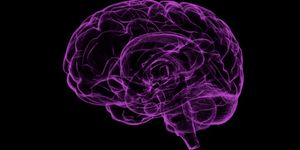New App Could Help Screen for Bruises on Children That Signal Abuse
Bruising on a child can be one of the earliest signs of child abuse in children. However, it is also one of the most over looked signs of child abuse, with bruises often mistaken as accidental bruising. In fact, some studies have suggested that nearly half of children with fatal or almost fatal bruising went overlooked by a health care professional.
The question is: how do we detect bruising accurately and early enough to prevent severe injuries or even death in children four and under experiencing abuse. With National Child Abuse Prevention month underway, a newly released smartphone app may hold some solutions.
Specifically, a team of researchers at Ann & Robert H. Lurie Children’s Hospital of Chicago have developed a novel smartphone app that could detect child abuse in children four and under by analyzing bruises. The app is described in a recent article published in JAMA Network Open.
The app, called LCAST (Lurie Children's Child Injury Plausibility Assessment Support Tool), was developed in partnership with a Lurie Children’s Emergency Medicine physician and researchers with Slingshot and BioDigital. LCAST creates a 3D image of a specific child. Users are able to input the location of a child’s bruise, as well as other information, such as accompanying symptoms or other injuries. Then, using an algorithm trained using published research on abuse and bruising, the app can then produce a recommendation about whether or not abuse was likely or not. This published research was pursued with National Institutes of Health (NIH) funding and used to create a decision-making process called TEN-4-FACESp, which can help determine which areas of the body are most likely to experiencing bruising caused by abuse.
To test the device, researchers screened more than 21,000 children under the age four at several pediatric emergency rooms as possible participants. They ended up enrolling about 2,100 participants. Overall, the app had an 85% specificity rate, meaning it could detect abuse with a high degree of accuracy and confidence.
Importantly, the app is not designed to make a definite judgment call that a child is being used. Instead, it is designed to be a tool to help enhance and support clinical decision making by identifying children who may be at a higher risk of abuse and warrant further evaluation.
Sources: EurekAlert!; JAMA Network Open








